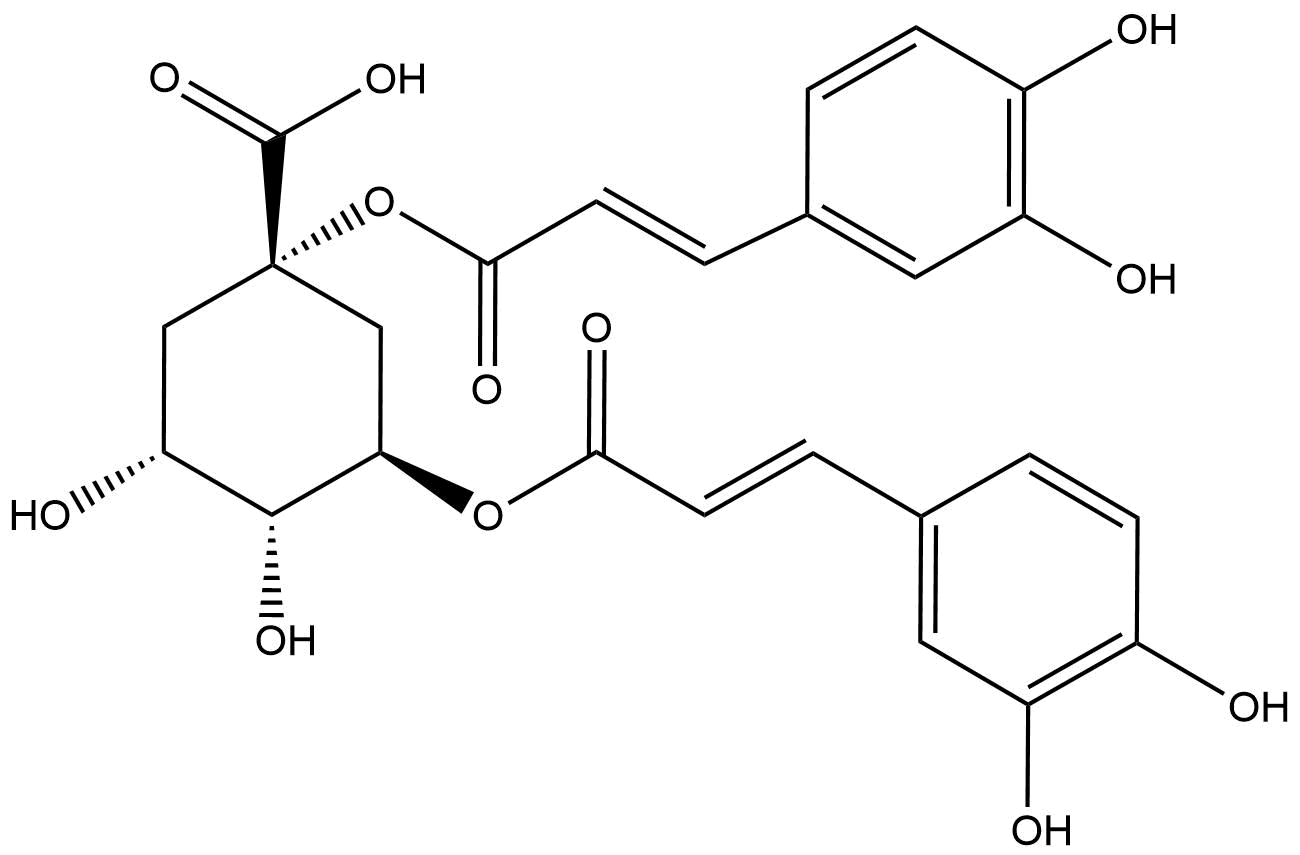
CynarineCAS No.:30964-13-7
|
||||||||||
 |
|
|
||||||||

| Catalogue No.: | BP0006 |
| Formula: | C25H24O12 |
| Mol Weight: | 516.451 |
Product name: 1,5-Dicaffeoylquinic acid
Synonym name: Cynarin; Cynarine
Catalogue No.: BP0006
Cas No.: 30964-13-7
Formula: C25H24O12
Mol Weight: 516.455
Botanical Source: globe artichoke (Cynara scolymus), quince fruit (Cydonia oblonga), Caucasian whortleberry (Vaccinium arctostaphylos), Aster scaber and Ipomoea batatas (sweet potato) tubers
Physical Description:
Type of Compound: Phenylpropanoids
Purity: 95%~99%
Analysis Method: HPLC-DAD or/and HPLC-ELSD
Identification Method: Mass, NMR
Packing: Brown vial or HDPE plastic bottle
Storage: Store in a well closed container, protected from air and light. Put into refrigerate or freeze for long term storage.
Whenever possible, you should prepare and use solutions on the same day. However, if you need to make up stock solutions in advance, we recommend that you store the solution as aliquots in tightly sealed vials at -20℃. Generally, these will be useable for up to two weeks.
The product could be supplied from milligrams to grams, up to kilograms
Inquire for bulk scale.
Descriptions:
1,5-Dicaffeoylquinic acid (1,5-DQA), a caffeoylquinic acid derivative isolated from Aster scaber, has neuroprotective effects, can prevent Aβ(42)-induced neurotoxicity through the activation of PI3K/Akt followed by the stimulation of Trk A, then the inhibition of GSK3β as well as the modulation of Bcl-2/Bax.[1]
1,5-Dicaffeoylquinic acid has antioxidant activity, and is stronger than that of ascorbic acid.[2]
1,5-Dicaffeoylquinic Acid has protective effects against MPP~+ induces neurotoxicity of PC12 Cells, it (50 μmol/L) pretreatment can inhibit the MPP+-induced up-regulation of the expression of α-synuclein mRNA and protein.[3]
1, 5-Dicaffeoylquinic acid can mediate glutathione synthesis through activation of Nrf2 protects against OGD/reperfusion-induced oxidative stress in astrocytes.[4]
References:
[1] XIAO, Hai-bing, WANG, et al. Chinese Medl Jl, 2011, 124(17):2628-35.
[2] Slanina J, Paulová H, Humpa O, et al. Organic Chem, 1999, 72.
[3] Cao X, Xiao H, Li H. Acta Med Universit Sci Et Technol Huazhong, 2010, 39(4):435-38.
[4] Xu C, Xiao H, Zhang Y, et al. Brain Res, 2010, 1347(1):142-8.
[5] Dong Y, Zhang Y, Liu Y, et al. Chinese J Pharm, 2010, 41(6):447-9.
HPLC of 1,5-Dicaffeoylquinic acid
